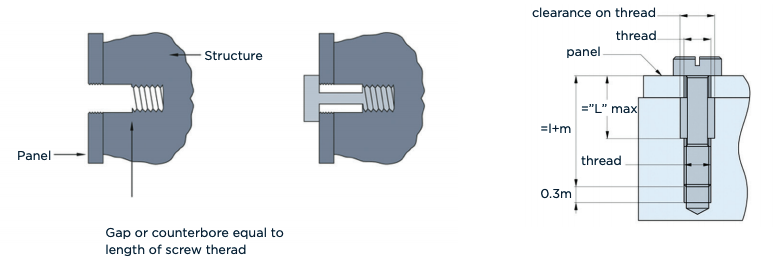Captive Screws
are designed to lock into a hole while allowing the fastened components to be detached without the complete removal of the screw itself.
Our team of experts is ready to support you.
A Captive Screw can be locked in place on a parent component without being fastened to a child component
- Captive Screws are typically locked in place via thread locking, press fitting or broaching
- Captive Screws help control costs by minimizing damage to machinery from loose screws and by reducing the need for replacement fasteners
- Captive Screws allows for easier and more ecient repairs due to quick access to components
- Captive Screws prevents damage from loose screws falling into moving parts or electrical circuits as well as the loss of screws
- Captive Screws also provide a longer durability as they do not cause damage to the application after usage cycles; they are permanent, yet allow access into the application

In general, the Captive Screws has a thinner diameter shoulder over the length of the screw with a threaded portion at the end.
An extensive range of Captive Screws are available, ranging in sizes:
- M2-M12 Cold Form
- M8-M80 Hot Form
KEBA Captive Screws are produced, but not limited, to:
- Stainless steel
- Zinc plated steel
KEBA CAPTIVE SCREWS are used in various business units for a wide array of industries such as:
- Automotive
- Electronics
- Machinery And Industrial
- Military And Precision Engineering

- 950 Echo Lan, Suite 220
Houston, Texas 77024 - +1 832-871-5481
- us@kebafastenings.com
USA
- Königstrasse 10C
Stuttgart, Germany 70173 - +49 711 2225 4129
- de@kebafastenings.com
GERMANY
- Kozyatagi Mah. Degirmen Sok.
AR Plaza No: 13/3,
Istanbul Turkey 34742 - +90 216 418 55 79
- tr@kebafastenings.com

